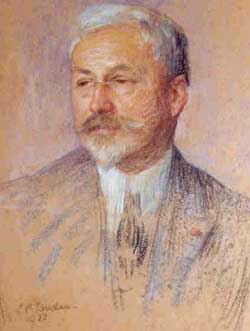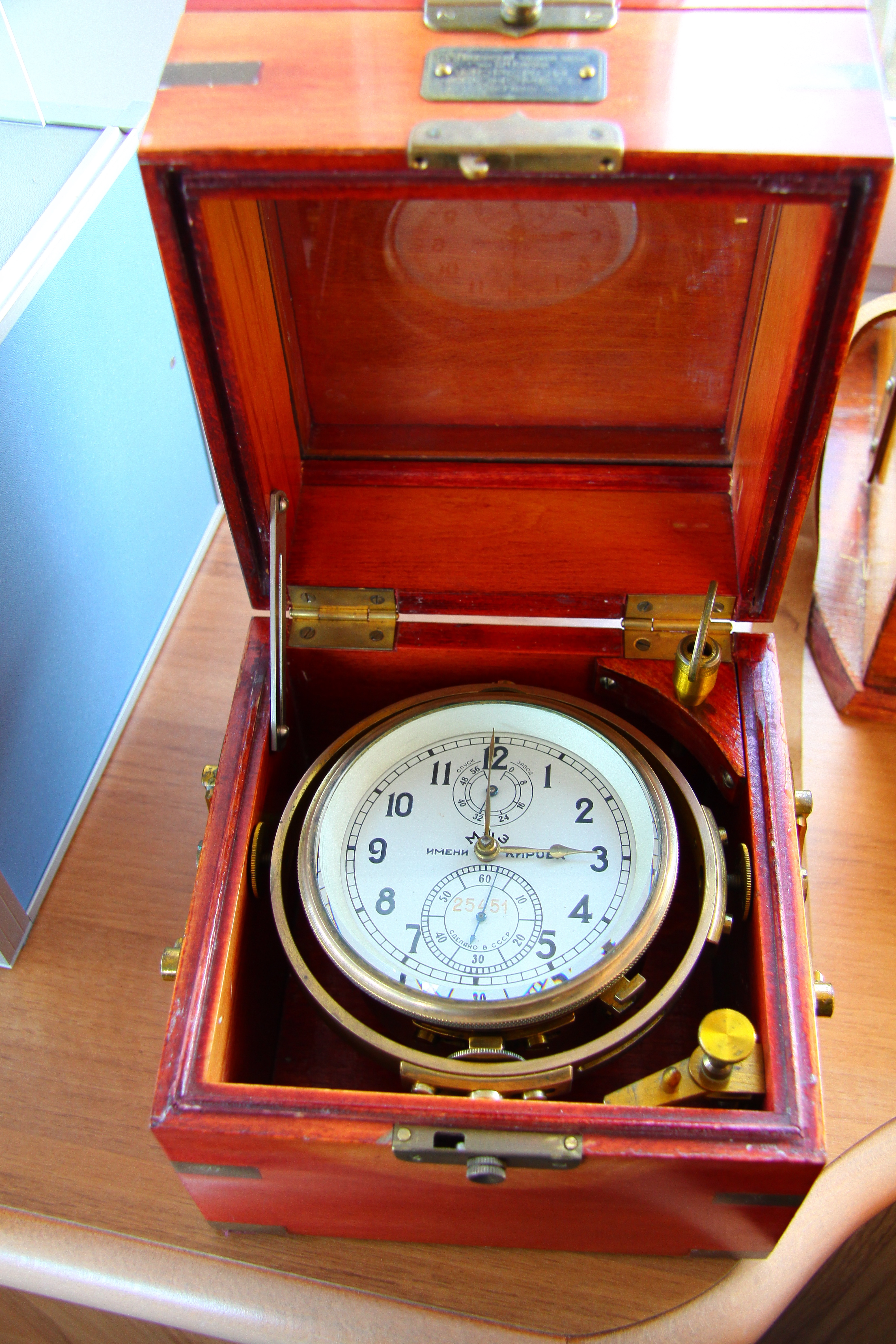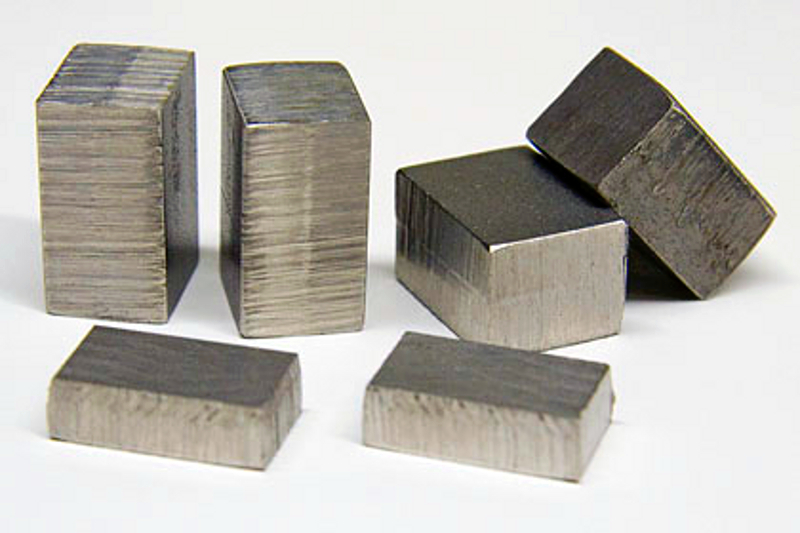|
Elinvar
Elinvar is a nickel–iron–chromium alloy notable for having a modulus of elasticity which does not change much with temperature changes. The name is a contraction of the French ('invariable elasticity'). It was invented by Charles Édouard Guillaume, a Swiss physicist who also invented Invar, another alloy of nickel and iron with very low thermal expansion. Guillaume won the 1920 Nobel Prize in Physics for these discoveries, which shows how important these alloys were for scientific instruments. Elinvar originally consisted of 52% iron, 36% nickel, and 12% chromium. It is almost non-magnetic, and corrosion resistant. Other variations of the Elinvar alloy are * Iron- and cobalt-based ferromagnetic Elinvar alloy * Manganese- and chromium-based anti-ferromagnetic Elinvar alloy * Palladium-based non-magnetic Elinvar alloy The largest use of Elinvar was in balance springs for mechanical watches and chronometers. A major cause of inaccuracy in watches and clocks was that ordinar ... [...More Info...] [...Related Items...] OR: [Wikipedia] [Google] [Baidu] |
Nivarox
Nivarox, also known as Nivarox - FAR SA is a Swiss company formed by a merger in 1984 between Nivarox SA and Fabriques d' Assortiments Réunis (FAR). It is currently owned by the Swatch Group. Nivarox is also the trade name of the metallic alloy from which its products are fabricated. Its notable property is that its coefficient of elasticity is remarkably constant with temperature. Nivarox is most famous for producing hairsprings that are attached to the balance wheel inside a mechanical watch movement, as well as mainsprings which provide the motive power for the watch. Nivarox was developed for use in watch hairsprings in 1933 by Reinhard Straumann in his Waldenbourg laboratory. FAR was the corporate name chosen in 1932 for the entity comprising several companies and subsidiaries located in Le Locle Switzerland, which at the time manufactured various watch components. Nivarox alloy As a trade name, Nivarox is an acronym from the German german: Nicht variabel oxydfest, label= ... [...More Info...] [...Related Items...] OR: [Wikipedia] [Google] [Baidu] |
Balance Wheel
A balance wheel, or balance, is the timekeeping device used in mechanical watches and small clocks, analogous to the pendulum in a pendulum clock. It is a weighted wheel that rotates back and forth, being returned toward its center position by a spiral torsion spring, known as the balance spring or ''hairspring''. It is driven by the escapement, which transforms the rotating motion of the watch gear train into impulses delivered to the balance wheel. Each swing of the wheel (called a "tick" or "beat") allows the gear train to advance a set amount, moving the hands forward. The balance wheel and hairspring together form a harmonic oscillator, which due to resonance oscillates preferentially at a certain rate, its resonant frequency or "beat", and resists oscillating at other rates. The combination of the mass of the balance wheel and the elasticity of the spring keep the time between each oscillation or "tick" very constant, accounting for its nearly universal use as the ... [...More Info...] [...Related Items...] OR: [Wikipedia] [Google] [Baidu] |
Charles Édouard Guillaume
Charles Édouard Guillaume (15 February 1861, in Fleurier, Switzerland – 13 May 1938, in Sèvres, France) was a Swiss physicist who received the Nobel Prize in Physics in 1920 in recognition of the service he had rendered to precision measurements in physics by his discovery of anomalies in nickel steel alloys. In 1919, he gave the fifth Guthrie Lecture at the Institute of Physics in London with the title "The Anomaly of the Nickel-Steels". Personal life Charles-Edouard Guillaume was born in Fleurier, Switzerland, on February 15, 1861. Guillaume received his early education in Neuchâtel, and obtained a doctoral degree in Physics at ETH Zurich in 1883. Guillaume was married in 1888 to A.M. Taufflieb, with whom he had three children. He died on 13 May, 1938 at Sèvres aged 77. Scientific career Guillaume was head of the International Bureau of Weights and Measures.Gould, p.201. He also worked with Kristian Birkeland, serving at the Observatoire de Paris—Section de Meud ... [...More Info...] [...Related Items...] OR: [Wikipedia] [Google] [Baidu] |
Nickel Alloys
This is a list of named alloys grouped alphabetically by base metal. Within these headings, the alloys are also grouped alphabetically. Some of the main alloying elements are optionally listed after the alloy names. Alloys by base metal Aluminium * AA-8000: used for electrical building wire in the U.S. per the National Electrical Code, replacing AA-1350. * Al–Li (2.45% lithium): aerospace applications, including the Space Shuttle * Alnico (nickel, cobalt): used for permanent magnets * Aluminium–Scandium (scandium) * Birmabright (magnesium, manganese): used in car bodies, mainly used by Land Rover cars. * Duralumin (copper) * Hiduminium or R.R. alloys (2% copper, iron, nickel): used in aircraft pistons * Hydronalium (up to 12% magnesium, 1% manganese): used in shipbuilding, resists seawater corrosion * Italma (3.5% magnesium, 0.3% manganese): formerly used to make coinage of the Italian lira * Magnalium (5-50% magnesium): used in airplane bodies, ladders, pyrotechnics ... [...More Info...] [...Related Items...] OR: [Wikipedia] [Google] [Baidu] |
Marine Chronometer
A marine chronometer is a precision timepiece that is carried on a ship and employed in the determination of the ship's position by celestial navigation. It is used to determine longitude by comparing Greenwich Mean Time (GMT), or in the modern world its successor Coordinated Universal Time (UTC), and the time at the current location found from observations of celestial bodies. When first developed in the 18th century, it was a major technical achievement, as accurate knowledge of the time over a long sea voyage was vital for effective navigation, lacking electronic or communications aids. The first true chronometer was the life work of one man, John Harrison, spanning 31 years of persistent experimentation and testing that revolutionized naval (and later aerial) navigation and enabling the Age of Discovery and Colonialism to accelerate. The term ''chronometer'' was coined from the Greek words '' χρόνος (chronos)'' (meaning time) and ''meter'' (meaning measure) in 1713 by ... [...More Info...] [...Related Items...] OR: [Wikipedia] [Google] [Baidu] |
Invar
Invar, also known generically as FeNi36 (64FeNi in the US), is a nickel–iron alloy notable for its uniquely low coefficient of thermal expansion (CTE or α). The name ''Invar'' comes from the word ''invariable'', referring to its relative lack of expansion or contraction with temperature changes. The discovery of the alloy was made in 1895 by Swiss physicist Charles Édouard Guillaume for which he received the Nobel Prize in Physics in 1920. It enabled improvements in scientific instruments. Properties Like other nickel/iron compositions, Invar is a solid solution; that is, it is a single-phase alloy. In one commercial version it consists of approximately 36% nickel and 64% iron. The invar range was described by Westinghouse scientists in 1961 as "30–45 atom per cent nickel". Common grades of Invar have a coefficient of thermal expansion (denoted α, and measured between 20 °C and 100 °C) of about 1.2 × 10−6 K−1 (1.2 ppm/°C), while ... [...More Info...] [...Related Items...] OR: [Wikipedia] [Google] [Baidu] |
Balance Spring
A balance spring, or hairspring, is a spring attached to the balance wheel in mechanical timepieces. It causes the balance wheel to oscillate with a resonant frequency when the timepiece is running, which controls the speed at which the wheels of the timepiece turn, thus the rate of movement of the hands. A regulator lever is often fitted, which can be used to alter the free length of the spring and thereby adjust the rate of the timepiece. The balance spring is a fine spiral or helical torsion spring used in mechanical watches, alarm clocks, kitchen timers, marine chronometers, and other timekeeping mechanisms to control the rate of oscillation of the balance wheel. The balance spring is an essential adjunct to the balance wheel, causing it to oscillate back and forth. The balance spring and balance wheel together form a harmonic oscillator, which oscillates with a precise period or "beat" resisting external disturbances, and is responsible for timekeeping accuracy. The addi ... [...More Info...] [...Related Items...] OR: [Wikipedia] [Google] [Baidu] |
Palladium
Palladium is a chemical element with the symbol Pd and atomic number 46. It is a rare and lustrous silvery-white metal discovered in 1803 by the English chemist William Hyde Wollaston. He named it after the asteroid Pallas, which was itself named after the epithet of the Greek goddess Athena, acquired by her when she slew Pallas. Palladium, platinum, rhodium, ruthenium, iridium and osmium form a group of elements referred to as the platinum group metals (PGMs). They have similar chemical properties, but palladium has the lowest melting point and is the least dense of them. More than half the supply of palladium and its congener platinum is used in catalytic converters, which convert as much as 90% of the harmful gases in automobile exhaust (hydrocarbons, carbon monoxide, and nitrogen dioxide) into nontoxic substances (nitrogen, carbon dioxide and water vapor). Palladium is also used in electronics, dentistry, medicine, hydrogen purification, chemical applications, groundwate ... [...More Info...] [...Related Items...] OR: [Wikipedia] [Google] [Baidu] |
Ferrous Alloys
In chemistry, the adjective Ferrous indicates a compound that contains iron(II), meaning iron in its +2 oxidation state, possibly as the divalent cation Fe2+. It is opposed to "ferric" or iron(III), meaning iron in its +3 oxidation state, such as the trivalent cation Fe3+.ferrous entry in the online dictionary. Accessed on 2008-04-19. This usage has been largely replaced by the nomenclature, which calls for the oxidation state being indicated by Roman numerals in parentheses, such as |
Mechanical Watch
A mechanical watch is a watch that uses a clockwork mechanism to measure the passage of time, as opposed to quartz watches which function using the vibration modes of a piezoelectric quartz tuning fork, or radio watches, which are quartz watches synchronized to an atomic clock via radio waves. A mechanical watch is driven by a mainspring which must be wound either periodically by hand or via a self-winding mechanism. Its force is transmitted through a series of gears to power the balance wheel, a weighted wheel which oscillates back and forth at a constant rate. A device called an escapement releases the watch's wheels to move forward a small amount with each swing of the balance wheel, moving the watch's hands forward at a constant rate. The escapement is what makes the 'ticking' sound which is heard in an operating mechanical watch. Mechanical watches evolved in Europe in the 17th century from spring powered clocks, which appeared in the 15th century. Mechanical watches ar ... [...More Info...] [...Related Items...] OR: [Wikipedia] [Google] [Baidu] |
Nickel
Nickel is a chemical element with symbol Ni and atomic number 28. It is a silvery-white lustrous metal with a slight golden tinge. Nickel is a hard and ductile transition metal. Pure nickel is chemically reactive but large pieces are slow to react with air under standard conditions because a passivation layer of nickel oxide forms on the surface that prevents further corrosion. Even so, pure native nickel is found in Earth's crust only in tiny amounts, usually in ultramafic rocks, and in the interiors of larger nickel–iron meteorites that were not exposed to oxygen when outside Earth's atmosphere. Meteoric nickel is found in combination with iron, a reflection of the origin of those elements as major end products of supernova nucleosynthesis. An iron–nickel mixture is thought to compose Earth's outer and inner cores. Use of nickel (as natural meteoric nickel–iron alloy) has been traced as far back as 3500 BCE. Nickel was first isolated and classified as an e ... [...More Info...] [...Related Items...] OR: [Wikipedia] [Google] [Baidu] |
Manganese
Manganese is a chemical element with the symbol Mn and atomic number 25. It is a hard, brittle, silvery metal, often found in minerals in combination with iron. Manganese is a transition metal with a multifaceted array of industrial alloy uses, particularly in stainless steels. It improves strength, workability, and resistance to wear. Manganese oxide is used as an oxidising agent; as a rubber additive; and in glass making, fertilisers, and ceramics. Manganese sulfate can be used as a fungicide. Manganese is also an essential human dietary element, important in macronutrient metabolism, bone formation, and free radical defense systems. It is a critical component in dozens of proteins and enzymes. It is found mostly in the bones, but also the liver, kidneys, and brain. In the human brain, the manganese is bound to manganese metalloproteins, most notably glutamine synthetase in astrocytes. Manganese was first isolated in 1774. It is familiar in the laboratory in the form of the ... [...More Info...] [...Related Items...] OR: [Wikipedia] [Google] [Baidu] |





2.jpg)
_oxide.jpg)

